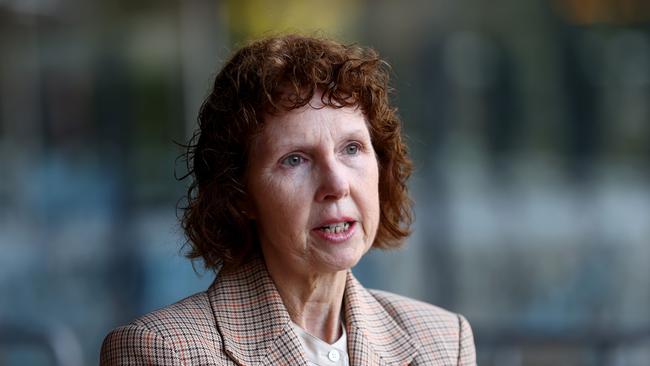More than 20 triple-0 calls face long waits as health crisis spirals to new levels
More than 20 triple-0 callmakers faced lengthy delays for paramedics on Wednesday, prompting fears South Australians will unnecessarily die as a result of the state’s spiralling health crisis.
SA News
Don't miss out on the headlines from SA News. Followed categories will be added to My News.
More than 20 triple-0 calls faced long delays for paramedics on Wednesday, prompting fears South Australians will unnecessarily die as a result of the state’s spiralling health crisis.
The Ambulance Employees Association warned there were up to 54 ambulances ramped at Adelaide hospitals on Wednesday night, while 23 emergency calls faced long waits for attendance.
It comes as SA Health ends its code yellow internal emergency on Friday at a time when health unions say is least appropriate.
AEA state secretary Leah Watkins said having 23 unattended triple-0 calls was heading back to the record levels seen in early 2022, when borders opened and there was a huge surge in Covid cases.
“We are getting back into that territory that saw five deaths that members informed us of in about 10 days due to delays caused by ramping,” she said.
“We haven’t seen these sorts of numbers in a long time and have grave concern we are back in territory that may see more deaths due to delays in response caused by ramping – there was one last month.
Last night SAAS declared OPSTAT White with up to 54 ambulances ramped across Adelaide, 17 ramped at FMC alone, some for over 7 hours.
— Ambulance Employees Association (SA) (@aeasa1981) August 15, 2024
Despite this risk to our community, SA Health is set to end the Statewide Code Yellow tomorrow, despite our calls for it to continue. pic.twitter.com/TEJn422sTG
“It is still a crisis. The code yellow may have done something but not enough to mitigate having 23 emergency calls left waiting while more than 50 ambulances were ramped.
“It is absolutely crazy, those calls were all lights-and-sirens emergencies that should have attended within 16 minutes.
“The conditions that existed when the code yellow was turned on are even worse now – it begs the question of what will it take to turn it back on.”
After more than two months, SA Health’s code yellow internal emergency ends on Friday night – but the ambulance union wants it extended, warning of the “risk to our community”.
At one stage on Wednesday there were 17 ambulances queued at Flinders Medical Centre waiting to unload patients, unable to respond to calls in the community.
It follows the record 5539 hours of ramping recorded in July.
It also follows the death of an elderly man in aged care on July 10 who waited five hours for an ambulance after a triple 0 call due to ramping.
A total of 951 non-urgent elective surgeries were postponed due to the code yellow since May 31 in an effort to free up hospital beds, with an aim of easing pressure on chronically full emergency departments which then causes ambulance ramping.
There are now 21,999 patients listed as ready for their elective surgery, including 4575 listed as overdue.
Department for Health and Wellbeing chief executive Dr Robyn Lawrence said although the code yellow is being lifted, “the escalation processes and collaborative approach we adopted through code yellow will continue, as will initiatives that better manage patient flow across our system”.

This includes purchasing care in the private sector, hiring more staff and opening more beds as quickly as possible.
“We are also advocating for long stay patients, who no longer need acute care but are unable to be discharged, due to the lack of Commonwealth aged care services and NDIS supports,” Dr Lawrence said.
“Clinicians continue to triage patients presenting at our sites appropriately and those needing the most urgent care are always treated first.”
Health Minister Chris Picton said efficiencies from the code yellow are now embedded in the system.
“The code yellow was put in place to enable some rapid decision making to be put in place across our health system, Dr Lawrence was always clear when it reached a point they were embedded the code yellow would end and that’s exactly what’s happened,” he said.
“It means measures such as better co-ordination of getting patients back to country hospitals, better co-ordination of flow of patients across our system, better co-ordination of demand are now embedded parts of how the health system is operating.”
“It doesn’t mean all the issues in the health system are fixed.”
Mr Picton spent Friday at a health ministers conference in Sydney where he pushed for more federal aged care beds, to clear hospitals of elderly patients medically ready for discharge but with nowhere suitable to go.
Meanwhile SA Health is urging doctors to use alternatives to standard intravenous drips amid a national shortage.
SA Health statewide incident controller Wayne Champion said there are “adequate levels of saline available in hospitals across SA Health and no surgeries have been impacted.”
Mr Champion said despite national and global supply issues, SA Health has adequate stock for immediate needs and have been assured that its orders will be fulfilled.
“In response to national and international shortages, we are conserving stock and have asked clinicians to use suitable alternatives for patients where it is clinically appropriate to do so,” he said.
“We are also sourcing further product domestically and from overseas markets.”




